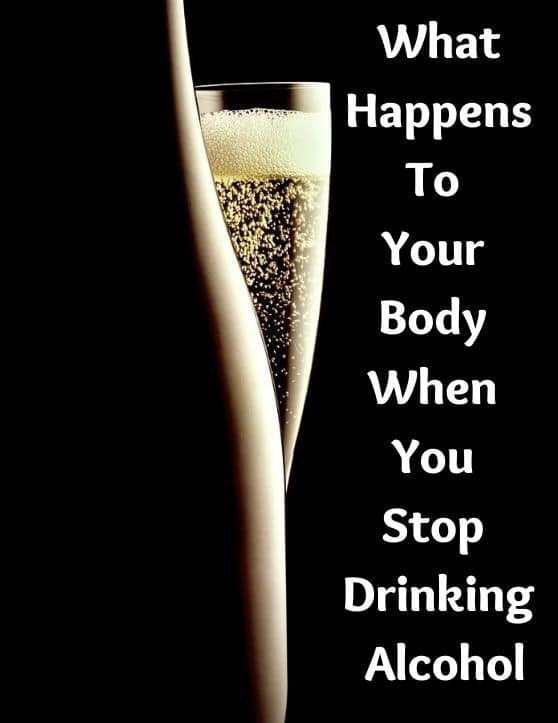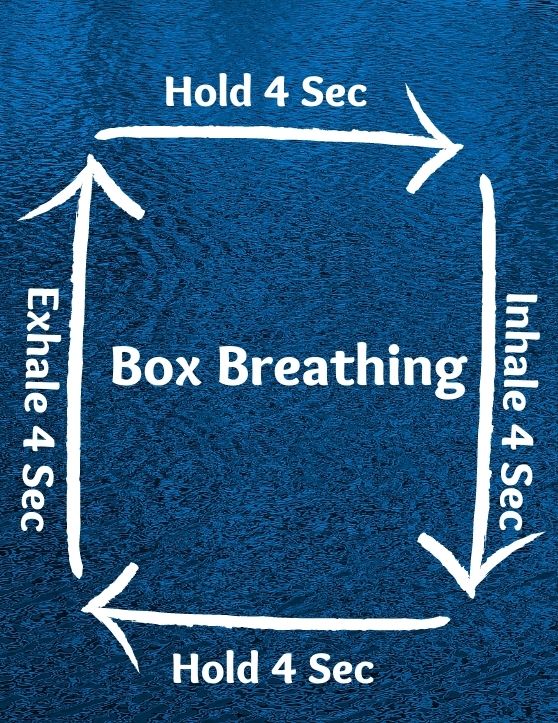Sugar Detox for Beginners: From a Sweeter Food to A Sweeter Life
Are you aware of the dangers of excess sugar consumption? A high intake of sugar can lead to numerous health problems, including obesity, diabetes, and heart disease. If you’re struggling with sugar cravings, a sugar detox may be just what you need.
Why You Need a Sugar Detox

Excessive sugar consumption can have a negative impact on your overall health. Some common signs of sugar addiction include intense cravings, mood swings, and fatigue. By undertaking a sugar detox, you can break the cycle of addiction and start experiencing the benefits of a healthier diet.
Benefits of a Sugar Detox
A sugar detox can provide numerous health benefits, such as increased energy levels, improved mental clarity, and weight loss. Additionally, reducing sugar intake can help lower the risk of developing chronic diseases and improve overall well-being.
How to Prepare for a Sugar Detox
Planning and preparation are crucial for a successful sugar detox. Here are some tips to help you prepare:
- Clear your pantry of sugary snacks and beverages.
- Stock up on healthy, whole foods.
- Plan your meals and snacks in advance.
Your 30-Day Sugar Detox Meal Plan
Ready to begin your sugar detox journey? We’ve prepared a comprehensive 30-day sugar detox meal plan to help you kickstart your new lifestyle. Check it out here.
Healthy Sugar Alternatives to Try

We all know that consuming excessive amounts of sugar can be detrimental to our well-being, leading to a range of issues like obesity, diabetes, and heart disease.
However, giving up sugar altogether can be intimidating for many of us, especially if we have a sweet tooth. Fortunately, there are a plethora of healthy substitutes for sugar that can satisfy our cravings without compromising our health.
One of the finest alternatives for natural sweeteners is honey. Not only is it tasty, but it also possesses a plethora of health benefits, including antibacterial and anti-inflammatory properties.
Moreover, since it’s sweeter than sugar, you can use less of it to achieve the same level of sweetness.
Another fantastic option is maple syrup, which is produced from the sap of maple trees. It’s an excellent source of antioxidants and minerals like zinc and manganese, and it has a distinctive flavor that’s perfect for pancakes and waffles.
If you’re seeking a zero-calorie sweetener, consider stevia. It’s produced from the leaves of the stevia plant and has been utilized as a natural sweetener for centuries.
Stevia is incredibly sweet, so you only require a small quantity to achieve the desired level of sweetness.

Naturally, these natural sweeteners should still be consumed in moderation, just like any other type of sugar.
But by swapping out processed sugars for healthier alternatives like honey, maple syrup, or stevia, you can relish the sweetness you crave without putting your health at risk.
So why not give them a shot? Your taste buds – and your body – will thank you!
Overcoming Sugar Withdrawal Symptoms
Giving up sugar can be tough, especially if you’ve been consuming it regularly for a long time.
When you stop eating sugar, you may experience a range of withdrawal symptoms, including headaches, irritability, and fatigue.
But don’t worry – there are some things you can do to manage and overcome these symptoms.
First and foremost, staying hydrated is crucial. Drinking plenty of water throughout the day can help flush out toxins and keep you feeling refreshed and energized.
Plus, dehydration can exacerbate headaches and fatigue, so it’s essential to keep your fluid levels up.
Regular exercise is also a great way to manage sugar withdrawal symptoms. Exercise releases endorphins, which are natural mood-boosters, and can help reduce feelings of irritability and anxiety.
Plus, getting your heart rate up can also help combat fatigue and improve your overall energy levels.
Another important aspect of overcoming sugar withdrawal symptoms is getting enough rest.
Make sure you’re getting at least seven to eight hours of sleep each night, as lack of sleep can exacerbate feelings of fatigue and irritability.
It’s important to be patient with yourself. Sugar withdrawal symptoms can be tough, but they won’t last forever.
Keep reminding yourself of the benefits of giving up sugar, like improved health and energy levels, and stay focused on your goals.
Managing sugar withdrawal symptoms requires a multi-faceted approach that involves staying hydrated, exercising regularly, getting enough rest, and being patient with yourself.
With these tips in mind, you can overcome sugar withdrawal symptoms and enjoy the benefits of a healthier lifestyle.
Tips for Staying on Track During Your Sugar Detox

Giving up sugar can be a challenging process, but with the right strategies in place, you can stay motivated and on track.
Here are a few tips to help you stay committed to your sugar detox goals:
First, consider keeping a food diary to track your progress. This can help you stay accountable and aware of what you’re eating.
Write down everything you eat and drink, including the time of day and any cravings you experience.
This can help you identify patterns in your eating habits and stay motivated to make healthy choices.
Seeking support from friends or family members can make a big difference in staying on track during your sugar detox.
Talk to your loved ones about your goals and why they’re important to you. They can help keep you accountable and provide encouragement when you need it.
Another helpful strategy is practicing mindfulness and meditation to manage cravings. When you feel a craving coming on, take a few deep breaths and try to focus on the present moment.
Remind yourself of why you’re doing this and visualize yourself achieving your goals. Meditation can also help reduce stress, which can be a major trigger for sugar cravings.
It’s important to celebrate your successes along the way. Every time you make a healthy choice or resist a craving, give yourself a pat on the back.
Recognize your progress and how far you’ve come. Celebrating your successes can help keep you motivated and on track.
Staying on track during your sugar detox requires a combination of strategies, including keeping a food diary, seeking support from loved ones, practicing mindfulness and meditation, and celebrating your successes.
With these tips in mind, you can stay committed to your goals and achieve long-term success in your sugar detox journey.
How to Reintroduce Sugar After Your Detox
After completing your sugar detox, it’s important to reintroduce sugar gradually and mindfully.
This can help you avoid overconsumption and maintain the healthy habits you developed during your detox.
Here are a few tips to help you reintroduce sugar in a healthy and sustainable way:
Start by incorporating small amounts of natural sweeteners, like fruit, into your diet. Fruits contain natural sugars and can help satisfy your sweet tooth without causing a spike in blood sugar levels.
Try adding a few berries to your morning oatmeal or having a small serving of fruit for dessert after dinner.
As you begin to reintroduce sugar, focus on maintaining a balanced, healthy diet. Incorporate a variety of whole foods, including lean proteins, complex carbohydrates, and healthy fats.
This can help you feel full and satisfied while still allowing for some indulgences.
Gradually increase your sugar intake over time, but be mindful of how your body responds. Pay attention to how you feel after eating sugary foods and adjust your intake accordingly.
You may find that certain types of sugar or sweeteners don’t agree with you, and that’s okay. Everyone’s body is different, so listen to yours and make adjustments as needed.
It’s also important to be aware of hidden sugars in packaged foods. Read labels carefully and choose foods with little to no added sugars.
This can help you avoid overconsumption and maintain a healthy balance of nutrients.
Reintroducing sugar after your detox requires a mindful and gradual approach.
Start by incorporating small amounts of natural sweeteners, maintain a balanced and healthy diet, gradually increase your sugar intake over time, and be aware of hidden sugars in packaged foods.
With these tips in mind, you can successfully reintroduce sugar while still maintaining your healthy habits.
Long-Term Strategies for Reducing Your Sugar Intake
Giving up sugar isn’t just a short-term detox – it’s a lifestyle change. To maintain a low-sugar lifestyle beyond your detox, it’s important to establish healthy eating habits that can last a lifetime.
Here are some strategies to help you reduce your sugar intake and maintain a healthy diet:
Eat plenty of whole, unprocessed foods. Whole foods like fruits, vegetables, whole grains, and lean proteins are naturally low in sugar and provide essential nutrients for a healthy diet.
Focus on incorporating these foods into your meals and snacks to reduce your overall sugar intake.
Limit consumption of processed foods high in added sugars. Processed foods like sugary drinks, candy, and baked goods are often high in added sugars and can contribute to overconsumption.
Try to limit your consumption of these foods and choose healthier options whenever possible.
Read food labels to be aware of hidden sugars. Sugar can be hiding in many unexpected places, like condiments, sauces, and even some types of bread.
Make sure to read food labels carefully and look for hidden sugars like corn syrup, molasses, or evaporated cane juice.
Prepare meals at home, allowing for better control over ingredients. When you cook at home, you have greater control over the ingredients and can ensure that you’re using healthy, low-sugar options.
Try meal prepping on the weekends to make healthy eating more convenient during the week.
Opt for healthier dessert options, like fruit or dark chocolate.
These options are naturally lower in sugar and can still satisfy your sweet tooth.
Reducing your sugar intake requires long-term lifestyle changes.
By eating whole, unprocessed foods, limiting processed foods high in added sugars, reading food labels, preparing meals at home, and opting for healthier dessert options, you can reduce your sugar intake and maintain a healthy diet.
Embracing a Healthier, Sugar-Free Lifestyle
Embarking on a 30-day sugar detox can lead to significant health benefits, such as increased energy, weight loss, and improved mental clarity.
Remember, it’s okay to indulge in moderation, but maintaining a low-sugar lifestyle can help you enjoy a healthier, more vibrant life. Give it a try, and experience the transformation for yourself!
A Sweet Farewell: Concluding Your Sugar Detox Journey
Embarking on a sugar detox journey may be challenging at first, but the benefits you’ll experience make it worthwhile.
By following the tips and strategies outlined in this guide, you’ll be well on your way to achieving a healthier, more balanced lifestyle.
Stay committed, and you’ll soon discover the transformative power of a low-sugar diet. Good luck, and happy detoxing!
FAQs
Q: Is it safe to do a sugar detox?
A: Yes, a sugar detox is generally safe for most individuals. However, if you have a pre-existing medical condition, it’s always best to consult with your healthcare provider before starting a new diet plan.
Q: Can I exercise during my sugar detox?
A: Absolutely! Regular exercise can help manage sugar withdrawal symptoms and support overall health. Be sure to choose activities that you enjoy and can maintain throughout your sugar detox.
Q: How can I handle sugar cravings during my detox?
A: When cravings hit, try reaching for a piece of fruit or a healthy snack, like nuts or yogurt. Staying hydrated and practicing mindfulness can also help reduce cravings.
Q: Is a sugar detox suitable for people with diabetes?
A: A sugar detox may be beneficial for individuals with diabetes, as it focuses on reducing added sugars and promoting a balanced diet. However, it’s essential to consult with your healthcare provider before making any significant dietary changes.
Q: Can I still enjoy desserts while maintaining a low-sugar lifestyle?
A: Yes, you can still enjoy desserts in moderation. Opt for healthier alternatives like fruit, dark chocolate, or treats sweetened with natural sweeteners. Additionally, consider experimenting with low-sugar recipes to satisfy your sweet tooth without compromising your health goals.
Q: What should I do if I slip up and consume too much sugar during my detox?
A: Don’t worry! Slip-ups happen to the best of us. The key is not to dwell on it or feel guilty. Instead, acknowledge the slip-up, learn from it, and move forward. Refocus on your sugar detox goals and continue with your meal plan.
Q: How can I maintain motivation throughout the 30-day sugar detox?
A: Staying motivated can be challenging, but here are some tips to help you stay on track:
- Set realistic goals and celebrate small victories.
- Share your journey with friends or family for support and accountability.
- Remind yourself of the benefits you’ll experience by completing the detox.
Q: Are artificial sweeteners a good alternative during a sugar detox?
A: While artificial sweeteners can be helpful for reducing sugar intake, they may not be the best choice during a sugar detox. Some studies have shown that they can still trigger cravings for sweet foods. Instead, focus on natural sweeteners or whole fruits for a touch of sweetness.
Q: Can I drink alcohol during a sugar detox?
A: It’s best to avoid alcohol during your sugar detox, as it often contains hidden sugars and can trigger cravings.
Opt for non-alcoholic, low-sugar beverages like sparkling water with a splash of lemon or herbal tea.
Q: Will I gain the weight back once I reintroduce sugar to my diet?
A: As long as you reintroduce sugar mindfully and maintain a balanced, healthy diet, you should be able to maintain your weight loss.
Remember to indulge in moderation and continue practicing the healthy habits you’ve developed during your sugar detox.








